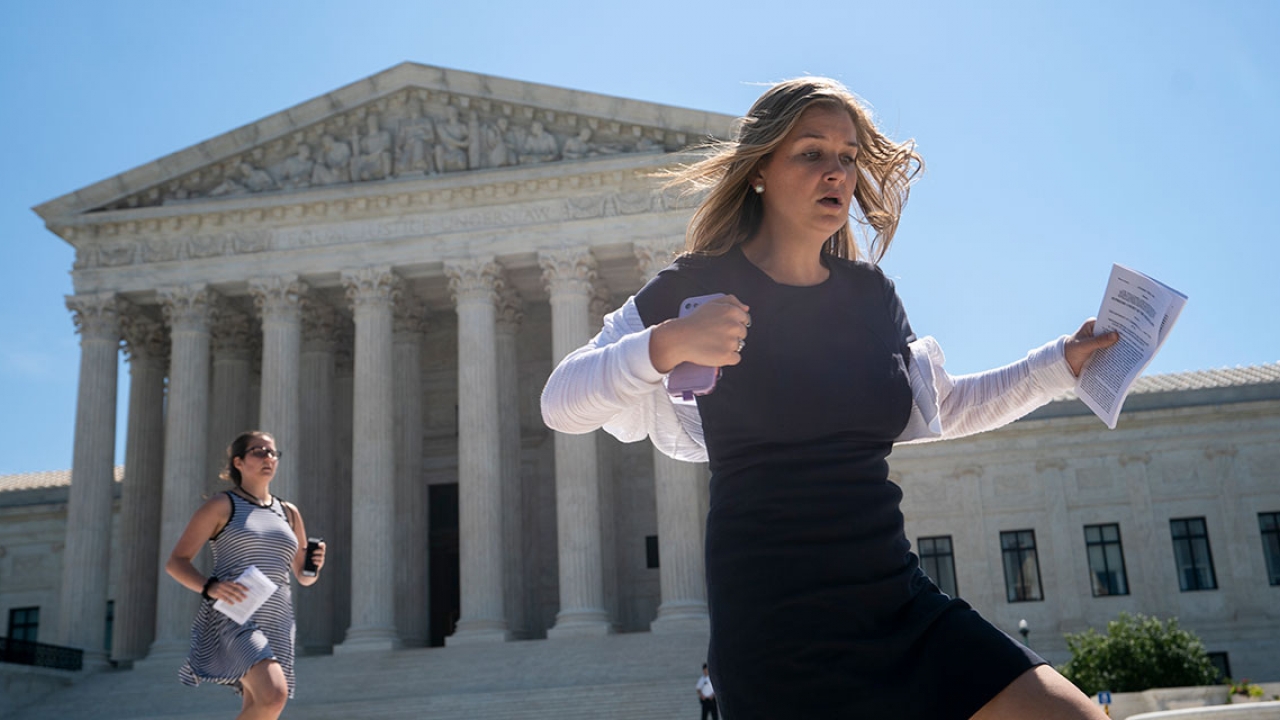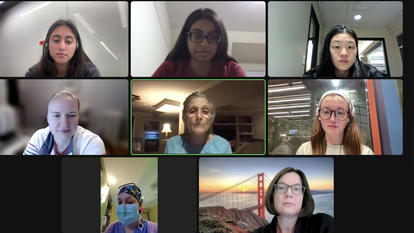As Supreme Court Term Ends, Two Wellesley Professors Discuss Recent and Future Cases

Following the conclusion of the Supreme Court’s most recent term, Wellesley’s Jennifer Chudy, Knafel Assistant Professor of Social Sciences and assistant professor of political science, and Tom Burke, Ralph Emerson and Alice Freeman Palmer Professor of Political Science, discuss the Supreme Court’s decisions in a year of transition for the Court, including high-profile cases regarding gerrymandering and the addition of a citizenship question to the census, and about what awaits the justices in the fall.
Q: Do you feel public opinion affected the court’s decisions on gerrymandering or the census?
Jennifer Chudy: I do not think public opinion had much, if any, impact on the gerrymandering or census decisions. These are complex issues involving many layers of bureaucracy; in the case of gerrymandering, even scholars are unsure about its substantive impact on election outcomes. Further, although these topics may get a lot of air time in certain circles, they tend not to be widely discussed among the public at large. For this reason, public opinion scholars almost never run national polls on these types of issue areas, which is to say, I do not think we even know public opinion toward gerrymandering or census decisions. Contrast this with gay marriage, an issue area that pollsters have been tracking since the 1970s. Since we do not know public sentiment on gerrymandering or census decisions, I doubt it can do much to constrain or shape Supreme Court decisions.
Q: Do court decisions shape public opinion, or is it the other way around, or neither?
Chudy: When we think about the relationship between the people and the court, it is tricky to know what comes first: Does the court rule a certain way to appease existing public opinion? Or does public opinion adjust in the aftermath of a court ruling? And if it adjusts, do we find public endorsement or backlash?
Despite this range of possibilities, another, more likely outcome is public inaction. On the vast majority of issue areas, including gerrymandering and the census decision, I think there is unlikely to be much, if any, reaction from the general public. Most people do not have the resources or time to deeply engage in politics, and to the extent that they do, they are more likely to follow news about the president, the 2020 election, or maybe the economy. Even though the impact of these rulings could be quite broad, technical issues like gerrymandering and the census are only going to receive attention among a tiny slice of the electorate.
Q: What can we learn about the direction of the Supreme Court from this year’s term?
Tom Burke: This feels a bit like an interim year, and I think it’s reaching to draw any strong conclusions about where the court is headed. You have two new members, the Trump nominees Neil Gorsuch and Brett Kavanaugh, who are still feeling out their roles. There’s longstanding political science research to suggest that what justices do in their first couple of years doesn’t really predict where they will end up, so I don’t think it’s worth focusing too much on the nuances of their initial votes and opinions.
One pattern we saw replicated this term is Chief Justice John Roberts’ continuing attempts to steer the court into quieter waters. Roberts is famously concerned that the court be seen as acting above and beyond partisan politics. He tries to keep the justices away from high-profile, politically polarizing cases that will put them in the national spotlight. His opinion in the gerrymandering case was typical: He provided the fifth vote to keep the court out of the business of deciding how to assemble electoral districts that are fair to both major parties. This court is quite conservative but also, partly because of Roberts’ influence, incrementalist. In my opinion, pro-lifers who expect a frontal assault on Roe v. Wade are likely to be disappointed. Instead the court is likely to chip away at liberal precedents bit by bit, making bigger jumps in the more technical policy areas that don’t engage the public.
Q: Is there a decision this year that hasn’t gotten much attention, but that you think is important?
Burke: In all the furor over gerrymandering, DACA, and the census, there was a decision about civil asset forfeiture that may have been overlooked. Civil asset forfeiture is when the police seize things like cars and even houses that are used to commit a crime. It’s very tempting for police departments to use this power to give themselves extra resources, and there’s been a lot of good reporting about police abuses of it, but it’s not easy to reform.
In the case the Supreme Court heard, Timbs v. Indiana, Timbs was convicted for drug dealing, and the police seized his Land Rover. The lawyers for Timbs pointed out that the maximum fine for his crimes was $12,000, but that the Land Rover was worth $40,000. There is a provision in the 8th Amendment, part of the Bill of Rights, that protects Americans against “excessive fines.”
Fining a guy $40,000, the value of the Land Rover, for a crime that specifies a maximum fine of $12,000 is clearly excessive. So it might seem like an easy case. And it would be, if the Bill of Rights governed states and local officials like police officers. But in fact, the Bill of Rights only protects you against abuses of the federal government—a fact few Americans probably understand.
The only way you can argue that a right in the Bill of Rights has been violated by a local police department is to claim that the right is a “fundamental liberty” protected by another constitutional provision, the 14th Amendment. That’s what the lawyers for Timbs argued, and the Supreme Court unanimously agreed. It’s historic any time one of the rights in the Bill of Rights is extended this way, but beyond that, this may turn out to be an effective route for regulating the use of civil forfeiture.
Q: As you look ahead to the fall docket, what do you see as most interesting or important?
Chudy: I think the DACA ruling could be interesting and important. Even though the case is specifically tied to a single program, I think it is more broadly representative of the administration’s treatment of immigration, which has received fervent support and opposition. Additionally, unlike gerrymandering and the census, there are visible and organized groups on both sides that could help translate public opinion into action.
Burke: Much of the news coverage has been about a case challenging the Trump administration’s repeal of DACA. DACA was created by the Obama administration to protect the “Dreamers,” people who were brought as children by their parents from another country to the United States illegally. Even President Trump, clearly no friend of immigrants, has said he has sympathy for the Dreamers. But the underlying legal issue is not whether deporting the Dreamers is fair or just, it’s whether presidents, either Trump or Obama before him, have the unilateral power to decide what should happen to them, or whether they need Congress to act. The question of what powers presidents have over immigration, and how they can exercise them, turns on complex and arcane matters of statutory interpretation and administrative law. So it’s a case that will get a lot of attention for its subject matter, but the law in the case will boggle anyone not steeped in, for example, the Administrative Procedures Act.
The other high-profile cases concern whether the Civil Rights Act of 1964 forbids discrimination against gays and lesbians and transgendered people. It might seem strange that a law enacted in 1964 could be extended in this way. It would be shocking, I’m sure, to the members of Congress who voted for this law in 1964 to think that it had anything to do with sexual orientation or gender identity. But when we interpret statutes we start with the text, and the text says that you can’t discriminate against people in employment “because of sex.” Does that cover the plaintiffs in these cases? I’m not sure what the court will do with this. It’s a conservative court, but public opinion is moving in a liberal direction on these issues, and historically the court usually goes with public opinion.
Photo: News agency interns, including Erin Kelly ’20 (right), sprint across the Supreme Court plaza with copies of the justices’ final decisions of the term on June 27, 2019. Kelly is currently an intern with CBS News.



